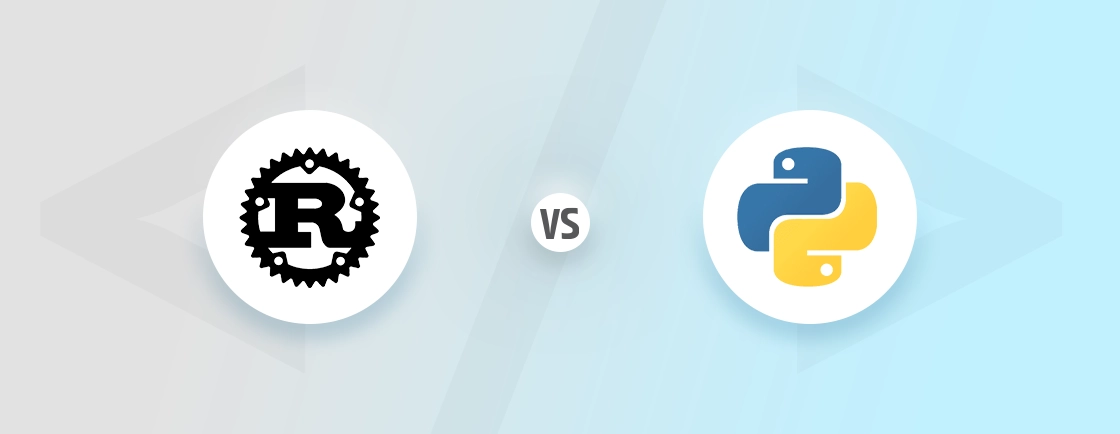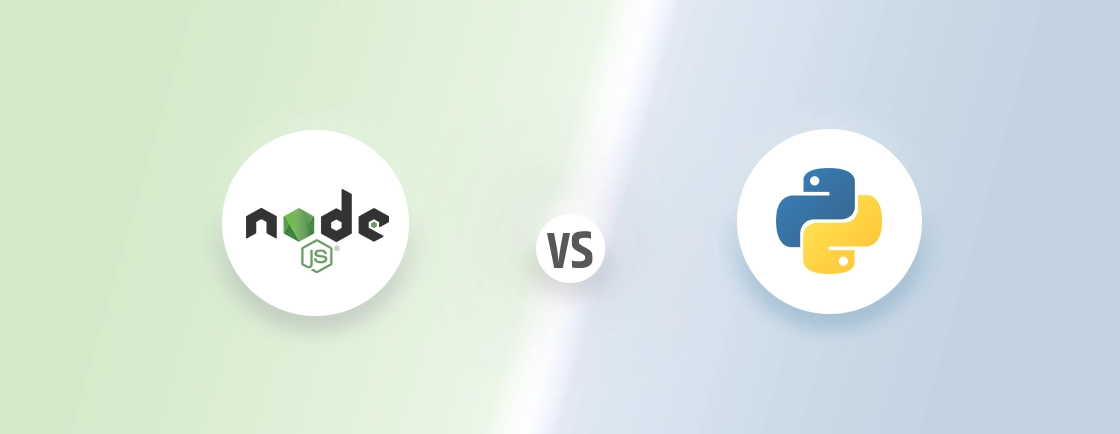Table of Contents
A majority of high-quality web and mobile applications rely on Java. But still, Golang (Go) has surged in popularity for cloud-native projects, with adoption growing annually.
Both Golang and Java dominate backend development, but still cater to different needs. Java offers a mature ecosystem. Golang offers simplicity and better performance for microservices and scalable infrastructure.
This blog will serve you as a guide to compare Golang vs Java on key factors and decide which one will be suitable. We’ll break down their strengths and trade-offs along with ideal use cases recommended by the web development experts. So let’s begin. Starting off with a direct comparison.
Golang vs Java: Comparison Table
| Factor | Golang | Java |
|---|---|---|
| Syntax | Golang has a minimalist, easy-to-learn syntax. | Java has a more verbose syntax with more boilerplate. |
| Performance | Generally faster due to compilation to machine code and efficient garbage collection. | Performance can be slightly lower due to JVM overhead and generational garbage collection. |
| Concurrency | Built-in support with goroutines and channels, lightweight and efficient. | Relies on threads, which can be more resource-intensive. |
| Memory Management | Automatic with efficient garbage collection, supports pointers. | Automatic with generational garbage collection. |
| Error Handling | Uses explicit return values for error checking. | Uses exceptions for error handling. |
| Learning Curve | Generally easier to learn, especially for those familiar with C-like syntax. | Steeper learning curve due to object-oriented concepts and extensive features. |
| Ecosystem | Growing, with strong support for cloud-native technologies, microservices, and networking. | Mature and extensive, with a vast number of libraries and frameworks for various purposes. |
| Use Cases | Microservices, cloud-native applications, network programming, command-line tools, high-performance systems. | Enterprise applications, Android development, web applications, and big data processing. |
All in all, Golang is often favored for its performance, concurrency features, and suitability for cloud-native development. Java, however, excels in its mature ecosystem, portability, and robustness for large, enterprise applications.
Overview of Golang
Golang, popularly known as Go, was launched by Google in 2009. It addresses the shortcomings of existing languages in large-scale, high-performance systems. Go offers minimalist syntax, built-in concurrency support, and efficient compilation. That prioritizes simplicity, speed, and scalability.
Key Features of Golang
- Simplicity: Clean, readable syntax with no unnecessary complexity.
- Concurrency Model: Goroutines and channels simplify parallel processing.
- Fast Compilation: Statically compiled into machine code for quick execution.
- Strong Standard Library: Rich built-in packages for networking, HTTP, and more.
- Cloud-native Focus: It’s widely used in DevOps, microservices, and distributed systems.
Pros of Golang
- Blazing-fast compilation & execution
- Simple, clean syntax (minimalist design)
- Built-in concurrency (goroutines, channels)
- Excellent for cloud-native & microservices
- Small memory footprint
Cons of Golang
- Limited ecosystem (fewer libraries/frameworks)
- No generics (until Go 1.18, still basic)
- Less suitable for complex OOP
- Younger language (smaller talent pool)
Go is ideal for modern cloud applications and scalable backend services where efficiency matters.
Overview of Java
Launched in 1995, Java is one of the top server-side programming languages. It powers enterprise applications, Android development, and large-scale systems. Java is known for its “Write Once, Run Anywhere” (WORA) capability via the Java Virtual Machine (JVM).
Java offers platform independence, strong object-oriented principles, and a vast ecosystem.
Key Features of Java
- Platform Independence: Runs on any device with a JVM.
- Robust Ecosystem: Extensive libraries, frameworks (Spring, Hibernate), and tools (Maven, Gradle).
- Strong Typing & OOP: Encapsulation, inheritance, and polymorphism for structured development.
- High Performance: Just-In-Time (JIT) compilation optimizes execution speed.
- Enterprise-grade: Dominates banking, eCommerce, and legacy systems.
Pros of Java
- Mature, vast ecosystem (Spring, Hibernate, etc.)
- Platform-independent (JVM)
- Strong OOP & enterprise-grade features
- Excellent performance (JIT optimization)
- Huge community & long-term support
Cons of Java
- Verbose syntax (more boilerplate)
- Memory-heavy (compared to Go)
- Slower startup time (JVM warm-up)
- Complex concurrency (vs. Go’s goroutines)
Java offers stability, scalability, and a mature developer community. That helps it excel in long-term, maintainable projects.
If you are trying to build cloud apps or work with high-performance APIs for your project, connect with the leading Java development company.
Detailed Comparison Between Golang & Java
While the overviews and tabular comparison might be enough to give you an idea about these two platforms, we can do one better. Here’s a comparison between Golang and Java based on the key factors. Let’s look at them one-by-one.
Ease of Use
Golang was designed with simplicity in mind. Its minimalist approach reduces cognitive load, making it easier for new developers to pick up. There’s no complex inheritance or generics (until recently), which keeps the learning curve shallow.
On the other hand, Java, while powerful, has a steeper learning curve due to its verbose syntax, complex OOP concepts, and vast ecosystem. New developers must understand concepts like classes, interfaces, and JVM mechanics before becoming productive.
Verdict: Golang wins for simplicity and faster onboarding.
Syntax
Golang uses a clean, C-like syntax with enforced formatting (via gofmt), reducing style debates. It avoids unnecessary keywords and keeps boilerplate minimal. However, the lack of traditional OOP features can be limiting for some use cases.
Java is more verbose, requiring explicit type declarations, getters/setters, and class definitions. While it ensures a more structured code, that also means you need to write more lines of code for simple tasks.
Verdict: Golang wins when it comes to readability and conciseness.
Performance
Golang compiles directly to machine code, resulting in fast startup times and efficient execution. It excels in low-latency applications like APIs and microservices. However, it lacks runtime optimizations like Java’s JIT compilation.
Java uses JIT compilation in the JVM, which optimizes performance over time. While startup is slower, long-running applications (e.g., servers) eventually outperform Go in some cases due to adaptive optimization.
Verdict: Tie – Golang for fast startup, Java for long-running optimizations.
Concurrency
Golang has built-in concurrency primitives (goroutines, channels) that make parallel programming intuitive. Goroutines are lightweight (unlike OS threads), allowing thousands to run efficiently.
Java relies on threads and executors, which are more resource-intensive. While powerful (especially with modern libraries like CompletableFuture), managing thread pools and synchronization is complex.
Verdict: Golang wins for simplicity and scalability.
Frameworks & Ecosystems
Golang has a smaller but growing ecosystem. Popular frameworks include Gin (HTTP), Echo (API), and Cobra (CLI). Lacks mature solutions for complex domains like enterprise CRUD apps.
Java boasts the richest ecosystem for everything from web apps to big data. Like, Spring, Hibernate, and Jakarta EE. However, dependency bloat and legacy baggage can be issues.
Verdict: Java wins for breadth and maturity.
Debugging
Golang offers basic debugging tools (delve). But its simplicity means there are fewer hidden behaviors to troubleshoot. Stack traces are clear, and race conditions are easier to detect.
Java has superior tooling (IntelliJ debugger, JProfiler). But complex abstractions (JVM, bytecode) can obscure issues like memory leaks.
Verdict: Tie – Go for simplicity, Java for advanced tooling.
Boilerplate
Golang minimizes boilerplate with implicit interfaces and struct composition. No getters/setters or public/private keywords.
Java requires verbose constructs even for simple data classes. For e.g., POJOs with Lombok annotations.
Verdict: Golang wins decisively.
Scalability
Golang scales horizontally with ease, ideal for distributed systems (Kubernetes, Docker). Low memory overhead suits microservices.
Java scales vertically better (JVM optimizations) and dominates monolithic enterprise apps. Thread-heavy apps may hit resource limits.
Verdict: Golang wins for cloud-native scalability.
Overall, the choice of platform depends on your use case and requirements. While Golang is the future for modern backend systems, Java remains the king of enterprise stability.
So, Which is Better? Golang or Java?
The choice between Golang and Java isn’t necessarily about which is “better”. It’s about which one better fits your project. So you need to consider performance needs, team expertise, and project scope, among other key factors.
Choose Golang if:
- You need a lightweight, well-performing language for cloud-native apps, microservices, or DevOps tools.
- Built-in concurrency, fast compilation, and minimal boilerplate are priorities.
- Your team values simplicity and rapid development over deep OOP structures.
Choose Java if:
- You’re building enterprise-level systems, Android apps, or long-term stable applications.
- A mature ecosystem, strong typing, and JVM optimizations are critical.
- You need popular frameworks like Spring or Hibernate for complex business logic.
Both languages excel in their domains, and the right pick will depend on what you’re building.
So for the right platform choice and development decisions, hire web developers with us today to get the best insights and solutions!
FAQs on Golang vs Java
Can Golang replace Java?
Not entirely. Golang might be better than Java in cloud-native, microservices, and high-performance backend systems. That’s because, in these applications, simplicity and concurrency are key.
However, Java still dominates enterprise applications, Android development, and legacy systems. That is due to its mature ecosystem and JVM optimizations. While Go is gaining traction, a full replacement is unlikely soon.
Which language is easier to learn? Golang or Java?
Golang is easier to learn due to its minimalist syntax and lack of complex OOP concepts. Java is powerful, but has a steeper learning curve with verbose syntax and JVM intricacies. Beginners often pick up Go faster, while Java requires more time to master.
Which has better libraries and frameworks? Golang or Java
Java has a richer ecosystem with popular frameworks like Spring, Hibernate, and Android SDK. Golang’s ecosystem is smaller but growing, with lightweight libraries like Gin and Echo.
For enterprise-grade solutions, Java wins; for modern cloud tools, Go is competitive.
How do they handle memory management?
Golang uses automatic garbage collection (GC) with low latency. That makes it efficient for real-time systems. Java also has GC but can suffer from higher memory overhead due to JVM. Go’s simpler memory model often leads to better performance in containerized environments.
Can Golang be used for mobile apps?
Golang isn’t a primary choice for mobile apps. Java/Kotlin dominate Android, and Swift is used for iOS. Go can be compiled to mobile via frameworks like Gomobile. But it lacks native UI support and ecosystem maturity. For mobile, Java (Android) remains the better choice.
Compare the best tech side by side.
Our in-depth comparisons help you see features, pros & cons, and choose the right tools confidently.





